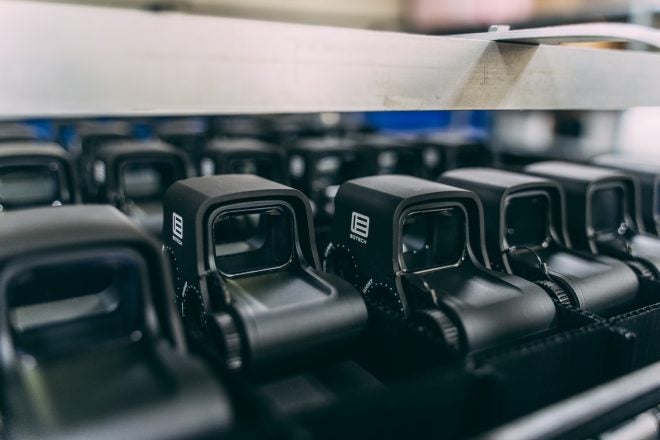For the first time ever, EOTech opened its factory doors in Ann Arbor Michigan to the media. We were invited to attend this unprecedented event and got to learn what made EOTech one of the top optic companies used by US Military and see how they make their flag ship Holographic Weapon Sight (HWS) as well as what changes they made since the Thermal Drift issue.

EOTech Factory Tour Presentation: Holography 101
The media event started with a presentation by their Chief Marketing Officer. She explained the history of EOTech and its roots in Heads Up Displays (HUD) for aircraft and helicopters. Did you know that “EO” in EOTech stands for Electro Optics? In the History slide below, EOTech started from a program at the University of Michigan. This is why EOTech is based at Ann Arbor.
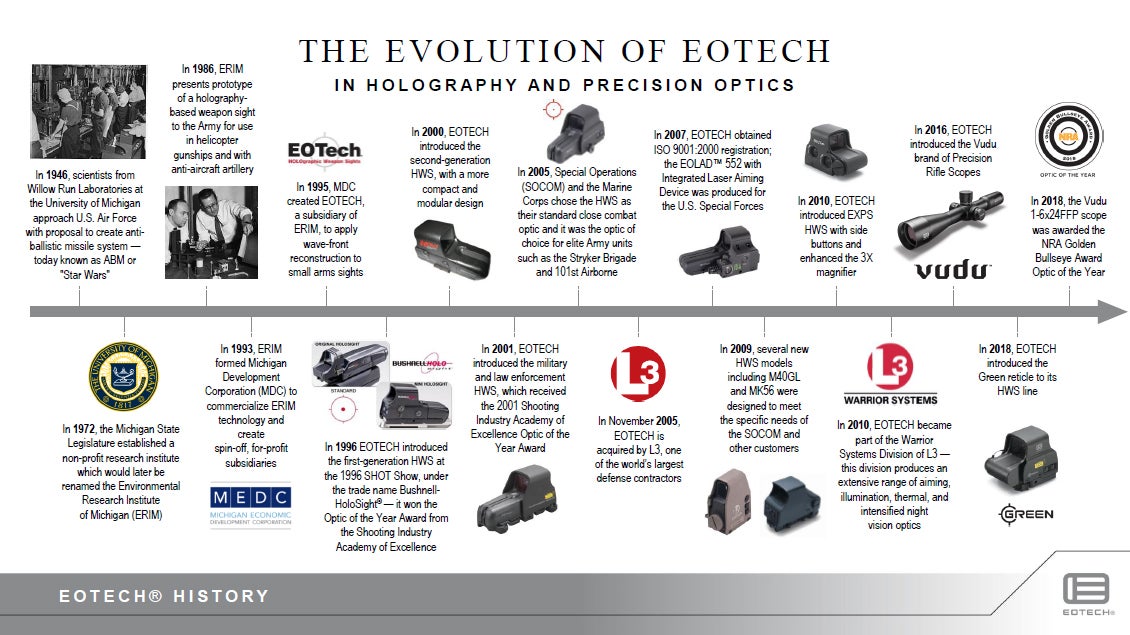
Their first commercial product was the Bushnell Holosight back in 1996.
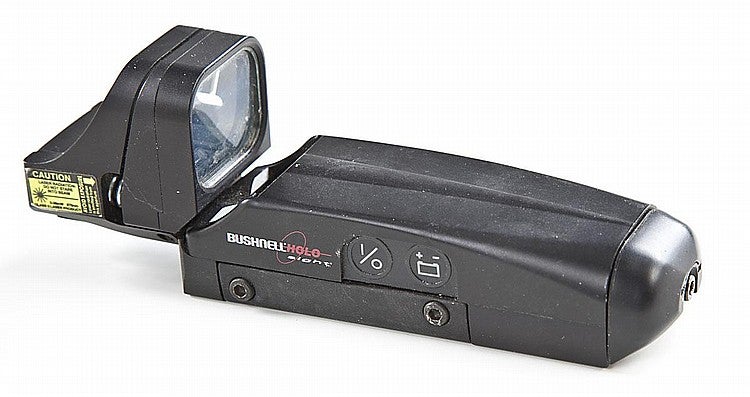
It wasn’t until 2005 that SOCOM and the US Marines adopted the HWS along with the US ARMY Stryker Brigade and 101st Airborne. In the same year, L3 Technologies acquired EOTech.
In 2010 EOTech introduced the EXPS model of HWS which now came with side buttons. Six years later they started VUDU Precision Rifle scopes and earlier this year they finally came out with a green reticle HWS.
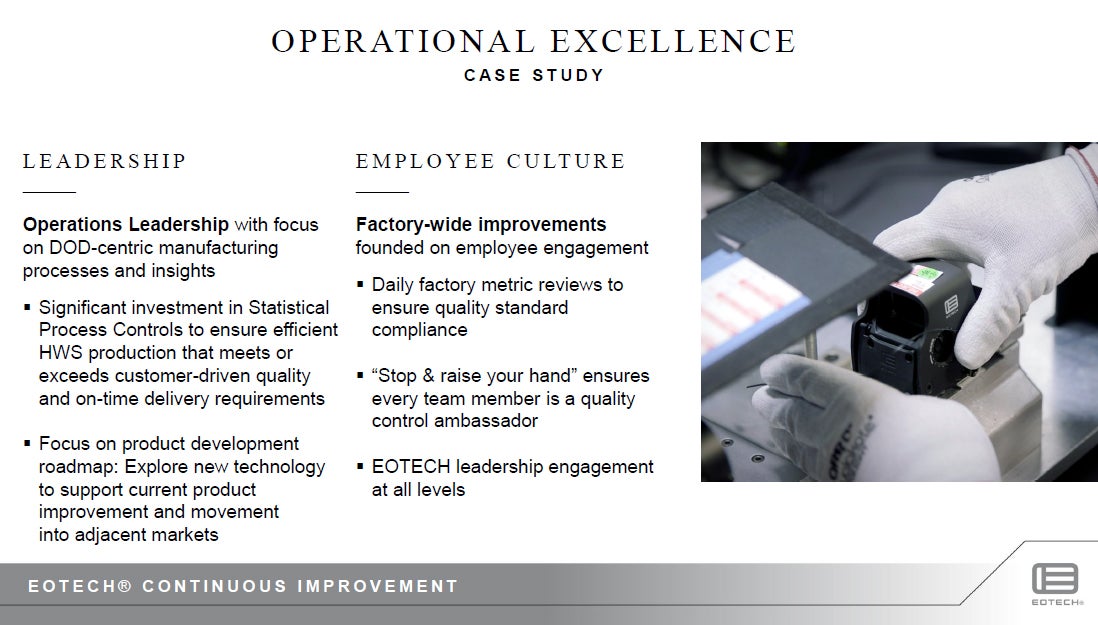
EOTech as a company is rather impressive. They are very open to employee input and care deeply about their quality control. This is part of the changes they made regarding the Thermal Drift issue. But more on that later.
L3 has a new focus called ISR (Intelligence, Surveillance, Reconnaissance) and are making products and services from “Plankton to Pluto”. What does that translate into? Sub-surface all the way into space there will be L3 products. 1/3 of L3 ISR workforce are veterans. Tom Hold, the president of EOTech, was an F18 pilot himself. He called it “the kinetic act of diplomacy”
During the presentation they had samples of some of their latest offerings. I was drawn to the demo XPS HWS that was made out of transparent polymer. This allows you to see how the HWS system works.
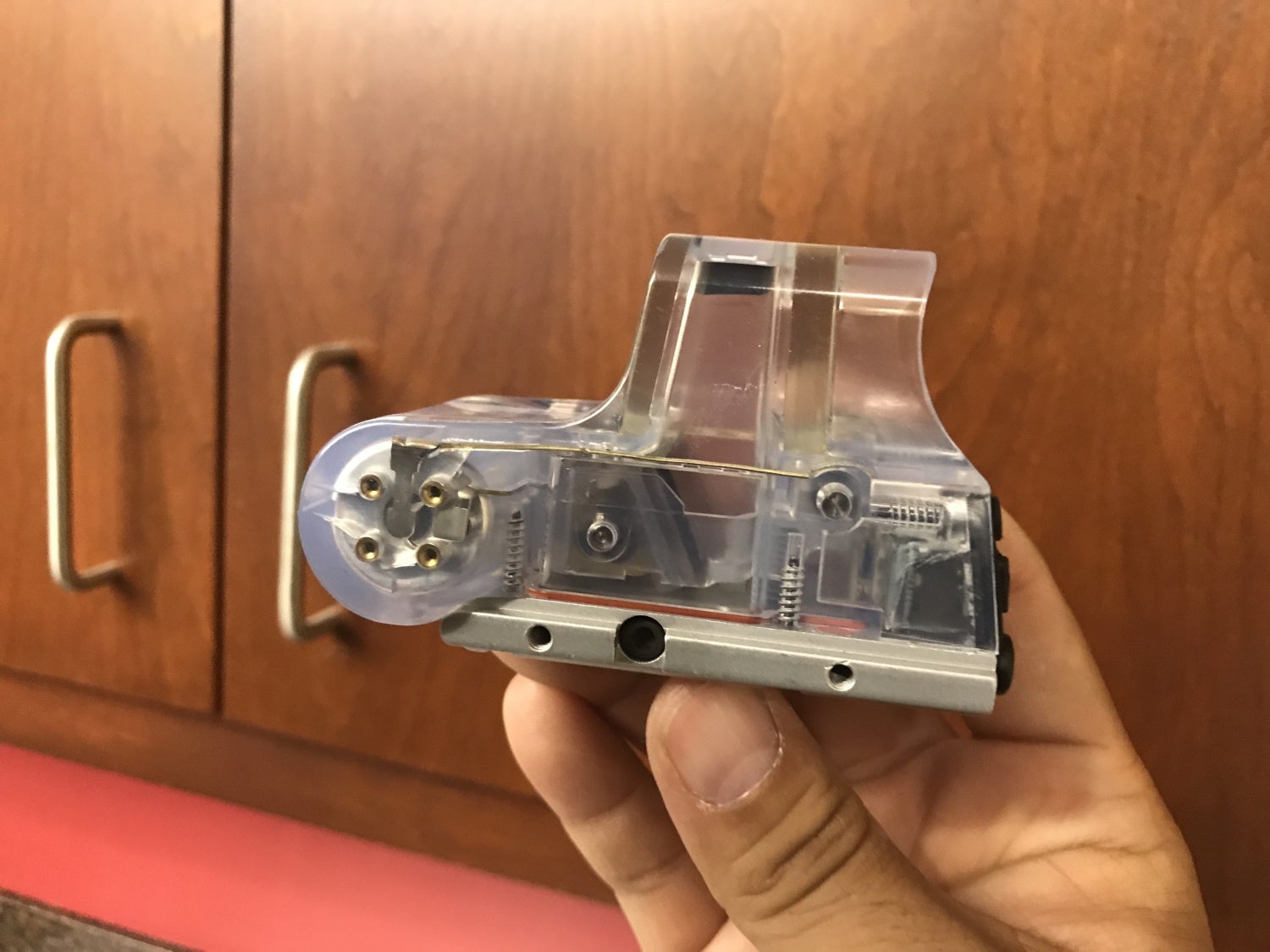

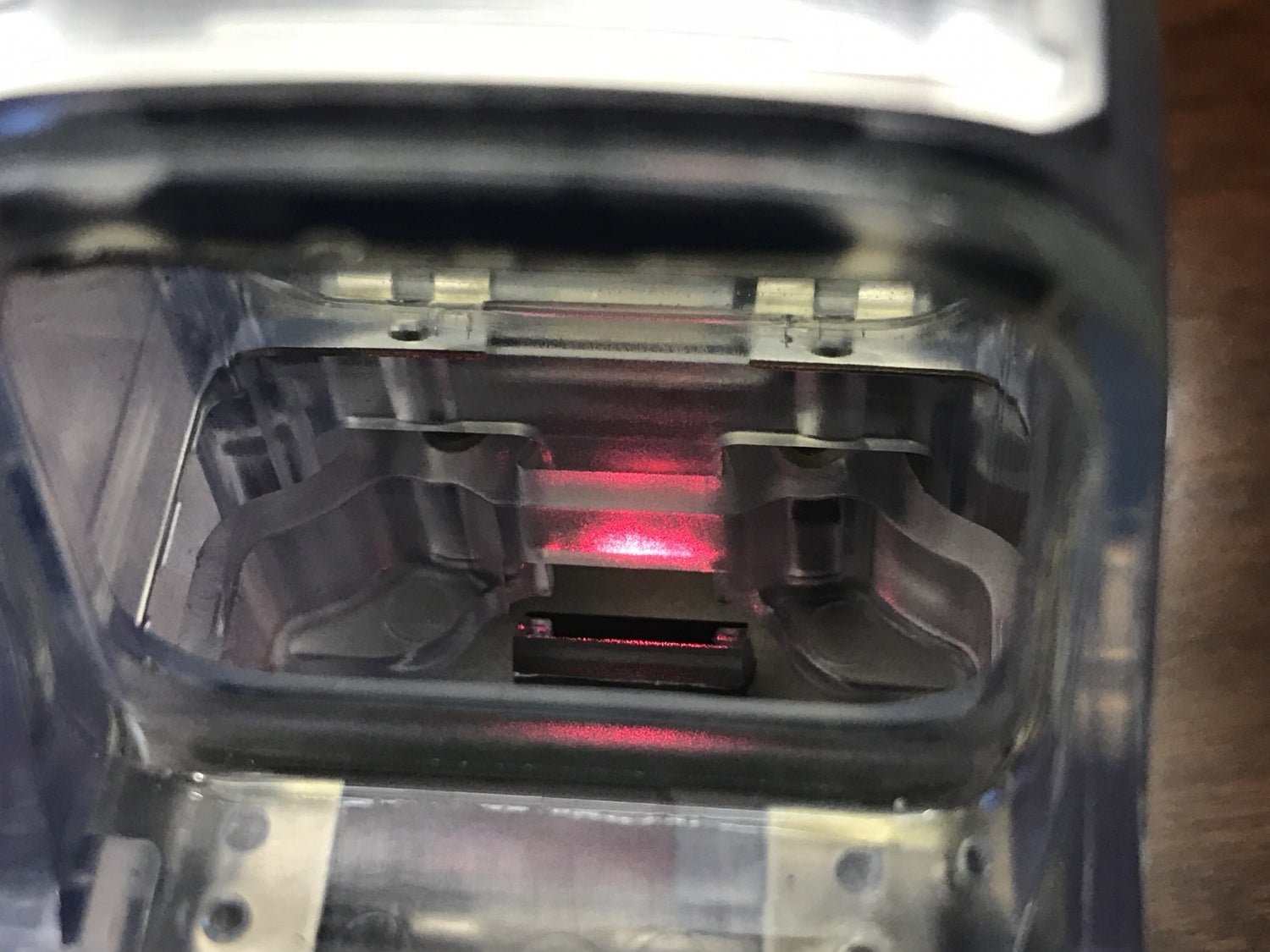

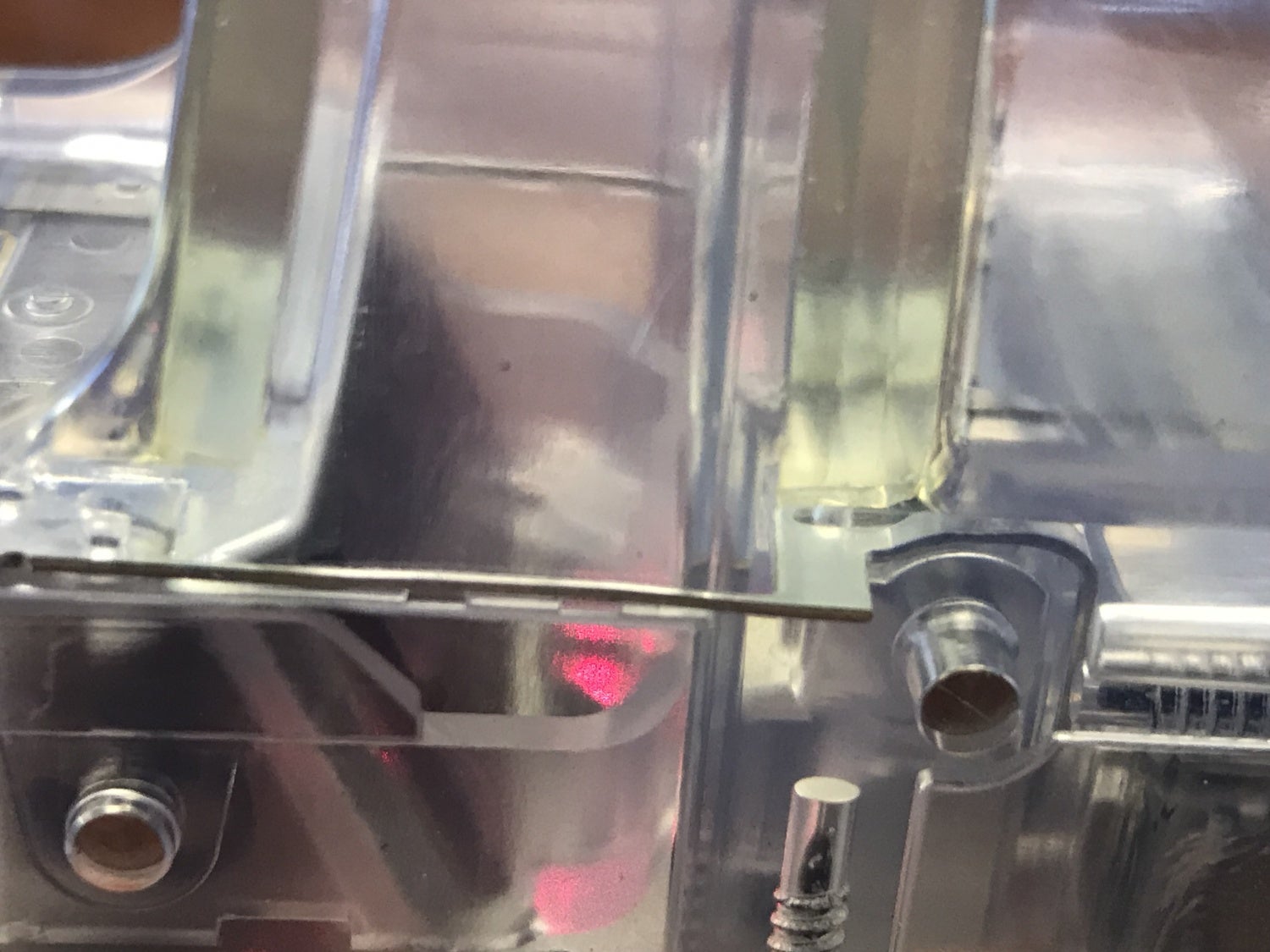



HWS VS RED DOT
While the transparent XPS2 was cool it doesn’t mean much without explanation. For those not familiar with how Holography works, it is quite different and more complicated than a simple reflex red dot.

When you adjust elevation and windage, you are shifting Number 4 Holographic Grating as seen in the diagram above.
The HWS system is like that of a HUD found in a fighter plane and the reflex red dot is like the HUD you find in a car. The C5 Corvette ZO6 had a HUD but it was based on a reflex design. The more complex HWS eliminates parallax even though the window is so much larger than your traditional red dots. Since the reticle does not reflect off the objective lens. this is actually a feature if the front lens is broken. Something a reflex sight can’t do if its lens is broken or obscured.
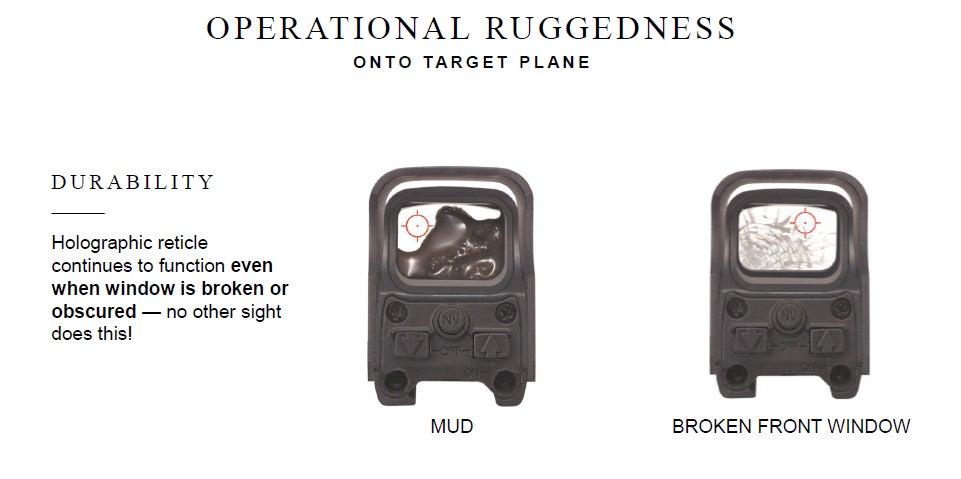
Here is a broken unit that was at the presentation. You can see it still functions.
Another claim by EOTech is that traditional Red Dots can be seen down range since the LED points forwards. Another issue down range is “muzzle side reflection”. Think of a scope and why honey comb sun shades were created. They reduce or in some cases eliminate reflection from the objective lens. EOTech claims there is minimal muzzle side reflection on their HWS.
Aaron Hampton, an EOTech technical advisor, claims that the HWS system projects the reticle down range so you have a true target focus. Red dots are like front sights and some people find themselves focusing on the dot rather than focusing on the target. I have not personally experienced this even though I have been shooting with red dots for over a decade. Have any of you experienced this issue?
I am sure you have all seen the HWS reticle and some of their other reticles. But did you know you can use the EOTech circle to estimate range?

One of the early claims I recall when I first learned about EOTech back in 2009 was the off-axis benefit to the holography. In the slide labeled “Operational Ruggedess” they give an example that the front lens is obscured with mud. As long as you can see through the lens and see your target, you can still get hits on target. But the off-axis target acquisition is not limited to emergency use, it is a feature for when using NODs (Night Observation Device).

The off-axis compatibility really shines when you use night vision. Trying to look through head mounted NODs while looking through a rifle mounted optic is challenging. Often your head does not line up properly and you cannot get a good cheek weld because the NOD interferes with something on the rifle. So often shooters will adopt a heads up style shooting position. Since the HWS has such a large window, it is not difficult to see the reticle with minor adjustment of your head and aim the NOD through the HWS. This is much more difficult with smaller red dots and usually requires a taller mount or special riser.
When using NODs with an EOTech HWS, you need a NV compatible version. Since the HWS system uses a laser, you have a laser basically shining into your night vision. So this was a problem for Gen 1 and Gen 2 image intensifier tubes. It would burn them out. So EOTech came up with the NV compatible HWS. The NV toggle button switches to a lower power setting reducing the brightness of the laser making it safe to use with NODs. I can confirm that even with my Gen 3 autogated PVS-14, you do not want to look through a non NV compatible HWS even on the lowest setting. It is not good for the tube. While it did not burn my tube out, I could see a darkening in the areas where the reticle shined on the tube. It eventually went away but not something you should do. Just get a NV compatible HWS if you want to run night vision.
Green Reticle: Not As Easy As You Think

As mentioned earlier, EOTech finally released a green reticle HWS. For years customers have been asking for a green reticle. It took a while for EOTech to come out with one and it was a lot more complicated than they expected. You would think all they would have to do would be to change the red laser diode out for a green laser diode. Well sure, that is step one. But guess what? It won’t work. Green laser diodes require more power and they had to redesign their electronics to make the Green HWS have similar battery run times as their Red HWS. Another complication is that since the wave length is different for green lasers, none of the internal components worked with green lasers. The holographic grating and even the holographic mask used to make the holographic reticle did not work with green lasers. More on this in the factory tour. Unfortunately due to the intensity of the green laser diode, it is not possible to make NV compatible HWS. So if you want to run Night Vision you will have to settle with a red reticle.
VUDU Precision Rifle Scopes

In 2016 EOTech expanded with their VUDU line of scope. At this time they also changed their logo. They made this change to be more inclusive with their VUDU line since they are not not just a Holographic Weapon Sight manufacturer.

I honestly have not taken a close look at the VUDU scopes when they came out and so I missed the subtle details that sets them apart from other tactical scopes. Did you know that instead of a tradition power magnification ring, they made the entire eyepiece rotate? So you just grasp the entire eyepiece and spin it to change magnification. They also have a threaded hole and include lever for faster magnification changes. This is a feature found in competition rifle setups like in 3Gun and PRS.

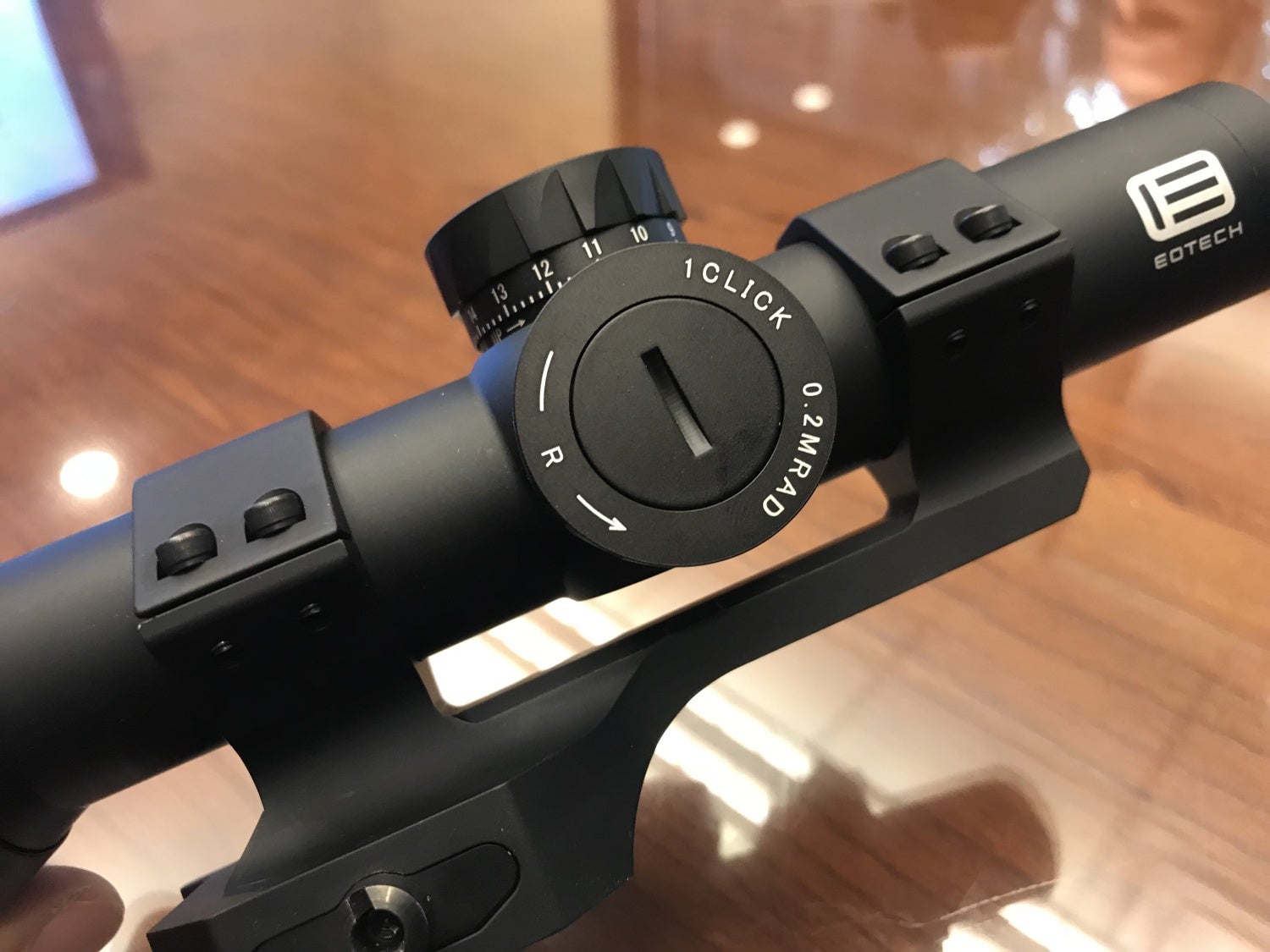
The VUDU scopes are made in entirely Japan. They all have high density glass, etched reticles and multi coated glass. Their illumination control is a push button rather than a rheostat knob. Earlier this year the VUDU 1-6x24FFP scope was awarded the NRA Golden Bullseye Award for Optic of the year.
HWS Break Down
The EOTech HWS comes in 6 basic models and the following slides details their differences. The 512 is their most popular sight and is powered by 2xAA. It is perfect if rail space is not a concern and if you need a NV compatible version then you need the 552. If you notice on the slide below, there are two reticle options for the 552. The standard speed ring reticle and the XR308 reticle. The XR308 was originally designed to use on the M240 belt fed machine gun but it works great on a .308 AR-10 when coupled with their G33 magnifier.
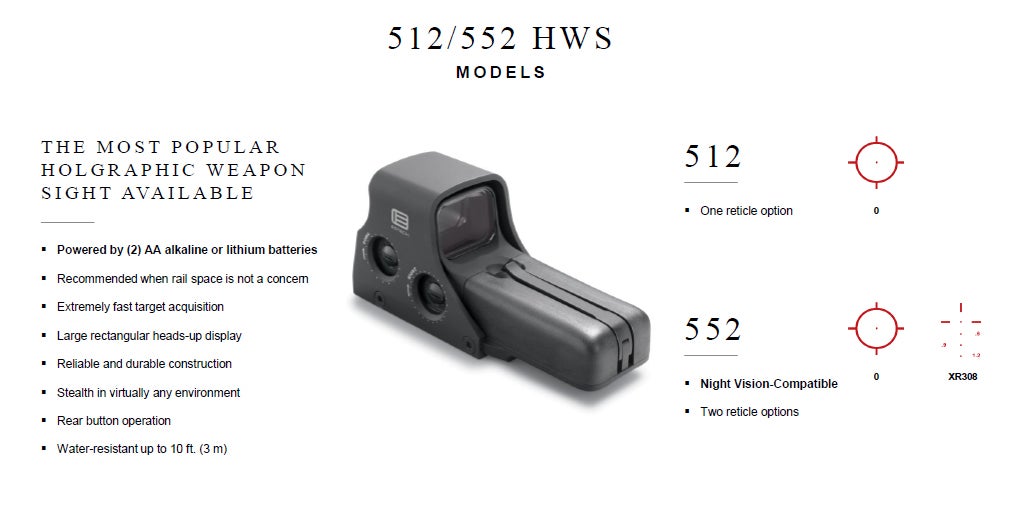
The XPS models of HWS was designed for make the HWS more compact. XPS stands for Cross Power Source, a reference to the battery positioned perpendicularly to the housing. Surprisingly the XPS3 is more water resistant than the XPS2 and it is NV compatible. 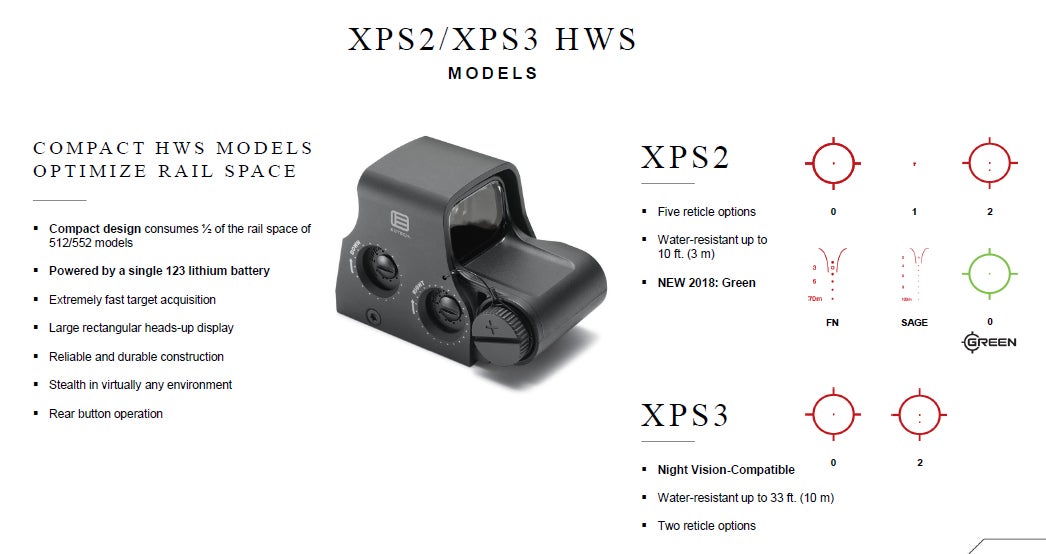
EXPS stands for Enhanced Cross Power Source and this is where you have side buttons and QD release. The mount also acts as a 7mm riser giving you a lower 1/3 co-witness.

Stay tuned for part two of our EOTech factory tour where you will get to peek behind the curtain and see how the EOTech HWS are made to higher standards. Much more than you would expect.
 Your Privacy Choices
Your Privacy Choices
